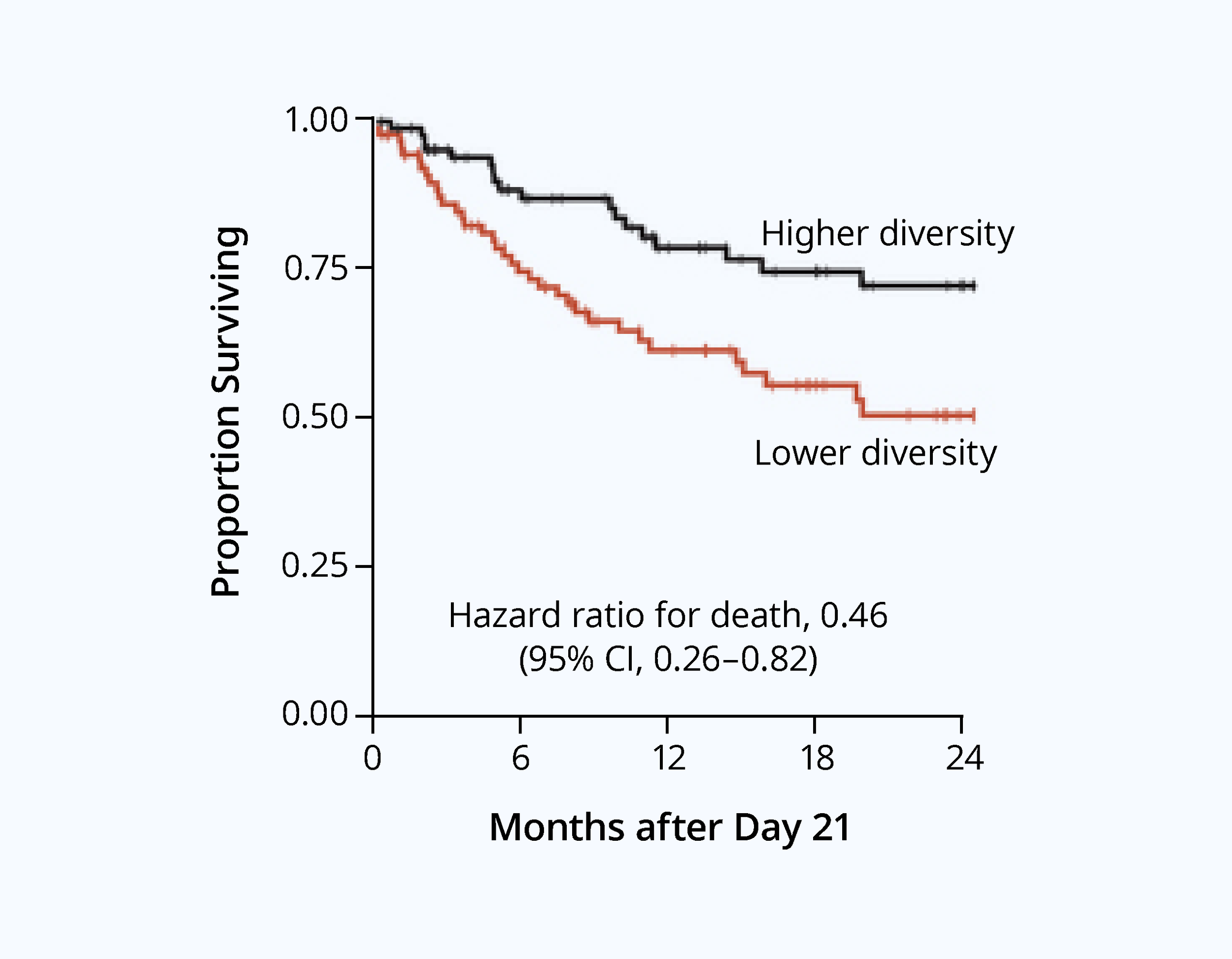
The gut microbiome
Both inside and out, the human body harbours ecosystems of micro-organisms, including bacteria, viruses, fungi and archaea. These microorganisms, their genomic potential and their collective repertoire of activity are known as ‘the microbiome’.
The gut microbiome is a diverse ecological kingdom
Structure and composition
*Source: Tierney Cell Host Microbe 2019
Function
Diversity matters
High Diversity
Commonly associated with health
Low Diversity
Commonly associated with disease
CASE STUDY 01
Microbiome diversity correlates inversely with liver disease
The liver and the intestinal tract have an intimate relationship, often described as the ‘gut-liver-axis’. The liver receives most of its blood supply via the gut (through the portal vein) and the liver communicates to the gut direct through the secretion of bile and its constituents, such as bile acids. Multiple clinical studies show that the profile of the microbiome changes in patients with liver disease towards a less diverse and more pro-inflammatory state. These changes in turn damage the inner lining of the intestine and promotes the translation of bacteria and damaging metabolites into the body.
1. Prevalence US+EU5
Microbiome diversity decreases in line with liver disease severity*
*Bajaj et al. Clin Liver Disease 2019
Multiple microbiome linked mechanisms have been revealed*
*Bloom et al. J Hepatol 2021
CASE STUDY 02
Diversity correlates to outcomes in stem cell transplant patients
Research has shown that the microbiome plays an important role in influencing immune system function in the context of cancer progression and response to treatment. One of the strongest links identified so far comes in the form of gut microbiome diversity in patients with blood cancer that have been identified as potential beneficiaries of a medical procedure called allogeneic haematopoietic stem cell transplantation (allo-HSCT). Several studies have shown that high diversity of the microbiome, both before and after treatment, is associated with reduced life threatening complications and improved overall survival.
Microbiome diversity strongly correlates to graft versus host disease (GVHD) mortality
*Jenq RR. et al, Biol Blood Marrow Transplant 21 (2015) 1373e1383
Microbiome diversity strongly correlates to overall survival post allo-HSCT (bone marrow transplant)
*Peled, J.U. & al N Engl J Med 2020;382:822-34









